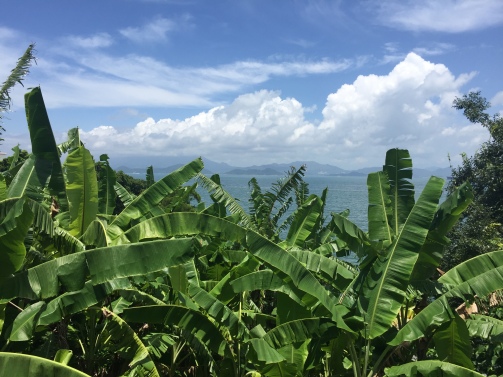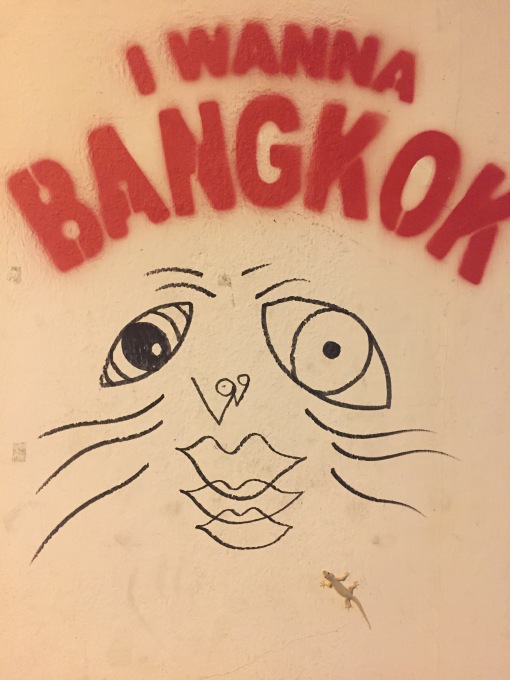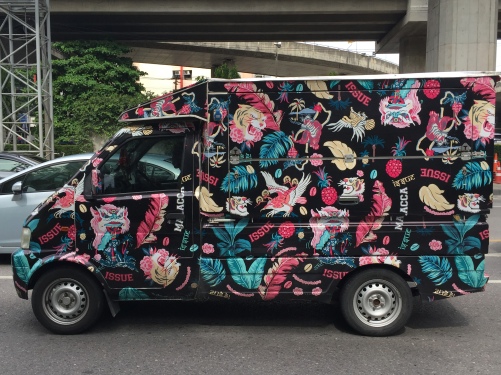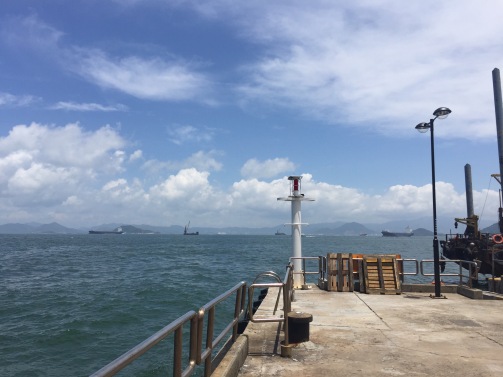
The end to a glorious adventure
12 08 2017“Life is either a daring adventure or nothing at all” – Helen Keller
This post brings to an end not only my Bangkok trip but also a larger adventure. After ten years (yes, ten!) I have decided to discontinue this blog.
Ilbonito has followed me from Tokyo to rural Australia to Bangkok, Hong Kong and back again, through the start and end of a marriage, and all kinds of tumultuous personal changes. But now the time seems right to take a bow. I am on the cusp of forty, about to start a new chapter and a new decade on a new island, engaged in a hitherto-unknown endeavour, property ownership.
It feels like time for a clean break.
The truth is too that I just don’t have the passion for it that I once did. Perhaps it is encroaching (or arrived!) middle age but I don’t feel the need to document and dissect things the way that I used to. Maybe it is simply that I no longer feel the need to define myself by lists of music I like or films I have seen. At this age, I know who I am and I have nothing left to prove. And after all, aren’t life’s pleasures meant to be transitory and fleeting, not endlessly analysed, recorded and re-lived (or so the Buddhists and modern mindfulness gurus always say) ? This blog has served as a record of the songs I listened to, the books that I read, experiences, sights of my everyday life that surprised or delighted me, my ever-changing obsessions and interests and inspirations and the places I went. But I think its time to let go of that safety net and keep those things only in my memory.
Part of this has been the influence of an author too, Karl Ove Knausgaard. Last year I devoured his “My Struggle” series and it was a revelation: his writing was so clear, honest and impassioned, unapologetically delving into the minutae of one man’s life. It made me wonder: what is the purpose of a record like this, writing about my life? Is it to be honest about my emotions, the things that have moved (or frightened) me? If so, this blog is not the right place for it. I can’t be that honest and exposed here (or at least, I don’t have the guts to be).
I need to acknowledge too that changes in the online eco-system have forced my hand. When I started this blog, facebook had not yet launched. The social media tsunami had not hit. In its early days, back in Kanagawa, this project served as a log of social events, pictures of me and my friends and what we did – a function now more than adequately filled by facebook. Over the years, as people have become more reticent about appearing online (and partners especially) I have ceased posting these kinds of things, to reformat as a blog devoted to whatever I consider “interesting” – whether that be architecture or street art or (overwhelmingly the most popular topic with my readers) gay life.
Yet now as everything online moves towards a social network model, the blog format itself is looking increasingly dated. My host, wordpress, was late to pick up on this change and is now scrambling to catch up and monetize: it has introduced a “subscription” model. On another front, photobucket (which hosts most of the images on this blog) is also pushing for payment to host links to third party sites (like this one), a service that had been free. In both cases, the costs are significant. It seems that the day of the vanity personal blog, (as opposed to the corporate webpage or the social media profile), might be ending.
So, I take a bow. On to the next chapter and the next daring adventure.

Comments : 7 Comments »
Tags: personal
Categories : Uncategorized
Goodbye song
12 08 2017
My summer of 2017 anthem.
Comments : Leave a Comment »
Tags: personal
Categories : Uncategorized
12 08 2017
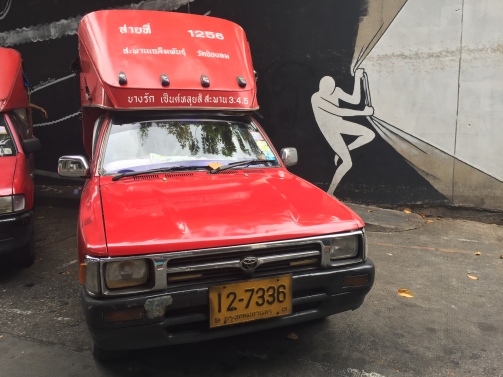

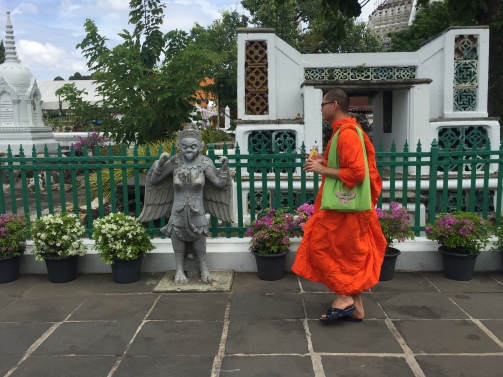
Comments : Leave a Comment »
Tags: bangkok, streetscapes, thai
Categories : Uncategorized
Bangkok: the money monster
12 08 2017Bangkok is a late capitalist capital par excellence. Everywhere, from the thronged pavement stalls of the tourists strips, to the plush and shiny malls, the seedy red light bars and the alleyways of Chinatown is laden with stuff: things to buy, services to purchase, all provided with a ready smile. There is no city I can think of where consumption is so conspicuous, and so varied. If you can’t buy it in Bangkok it likely doesn’t exist. As I once wrote, everything the human mind can devise or imitate is on sale here, often advertised commandingly on giant billboards or slick skytrain commercials. I saw one new (and well-situated) condo development tagged shamelessly, “Make yourself the centre of the universe!”
But this city of instant gratification and temptation can be a fickle monster. Trends are big here. Fads sweep through the city and then ebb away, like tsunamis. One minute everyone is crazy for yakiniku restaurants and then suddenly its all about tapas bars or organic wine. That is part of the fun of the city, gauging its obsessions du jour.
An interesting and unexpected trend I noticed on this trip was that the iconic Thailand elephant pants – beloved of backpackers but something of a running joke among the country’s more fashion forward citizens – have been (re)appropriated by Thai young people. I saw more than a few baggy Koh Phangan-style pants on hip Bangkok youth in the night markets and “walking streets”.
Even more interesting was the adoption of thanaka. The traditional Burmese herbal face-paste, until recently the preserve of the elderly and provincial, has made a big comeback in the capital, with a repackaged version given a push from a local personal care goods company. Charmingly yellow powdered faces were visible (often on working class people) around the city.
At the other end of the spectrum, well-to-do Bangkok seems to be flirting with another unlikely import. The city’s African music scene has always been surprisingly healthy but following the lead of trailblazing world music club Studio Lam, there are now at least two other African music-friendly venues aimed at upwardly mobile locals: 12 x 12, another bar in Thonglor described as a “Japanese hipster’s dream” and Third World Bar, on the second floor of the old Tapas on Silom Soi 4.
A less wholesome trend was one I read about in alarming news reports. Apparently the practice of facial surgery to create dimples – by piercing the cheeks with metal pins – had caught on and was now being practiced by unregulated and unqualified merchants at Chatuchak market, according to the lurid reports in the press.
But metal cheeks and Afro beats aside, the trend that had the biggest impact on my trip was undoubtedly an app. “Grab” is a must-download for anyone spending time in the city, a superior Southeast Asian sister to Uber. Not only is the Malaysian-based app wildly popular – meaning that a car is never more than a few minutes away – and cheaper than Uber with a better designed interface, it also eliminates the need to give your driver directions. You enter your destination and it pops up in English on an extremely detailed database, with a map directing your driver right there. No more tortuous conversations about “turn left after the Big C” across a language barrier, or taxi drivers who can’t read maps (or often, read at all, even if you have an address written in Thai). Grab revolutionises the ease with which you can explore Bangkok.
Comments : Leave a Comment »
Tags: african, bangkok, Fashion, personal, thai
Categories : Uncategorized
The ones that got away
12 08 2017
Even with a relatively long vacation, I couldn’t see and do everything I wanted. Bangkok is not a beast that can be easily tamed. Here are some of the ones that got away:

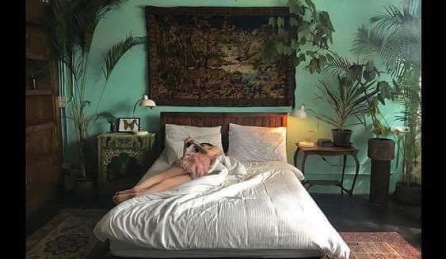
Most crushing disappointment was a near miss with the Mustang Nero, an instragram extravaganza of an airbnb with rooms named after individual animals (The Flamingo, The Wolf, The Octopus’s Garden) and fitted out with outrageous taxidermy ( a full sized giraffe, the interlocked skeletons of two deer fighting) and luxuriant tropical foliage. My boyfriend, who was staying an extra night, managed to secure the last available booking while I missed out, so I only have other peoples’ pictures to post… Also:
WAON Piano & Scotch: an “acoustic karaoke” bar on a Sukhumvit side street where an elderly Japanese gentleman plays requests on the piano while you sing along.
Chooseless: An artfully mixed-up bi-level multi-brand boutique/cafe in Ekkamai.
12 x 12: For African music (see above)
A new “underwear only” gay gym where hunky Caucasian intructors teach you how to “wrestle” (which I declined for obvious reasons).
The newly opened-to-the-public Bang Khun Phrom palace
A ‘secret” dive bar serving brewksies inside the city’s US intelligence headquarters (!)
And finally the interesting architecture of the 1971 Thailand Islamic Center, which has been on my hit-list for ages. I’ll make it one day :
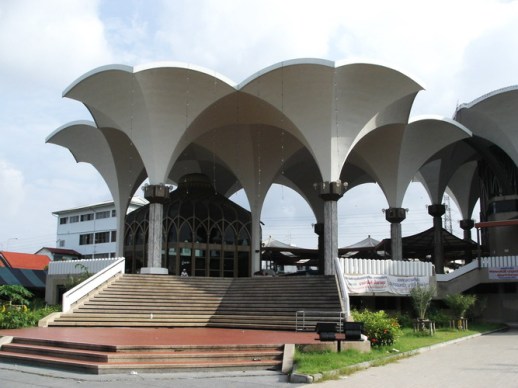

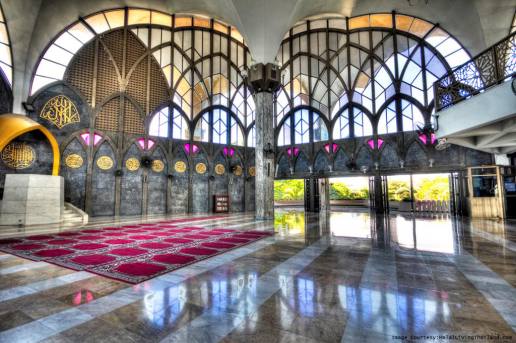
Comments : Leave a Comment »
Tags: architecture, bangkok, cultural mix n match, design, gay, mustang nero
Categories : Uncategorized
The writing on the wall
12 08 2017
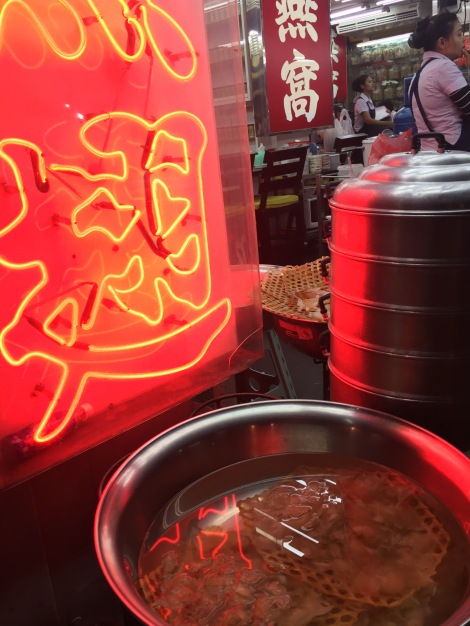
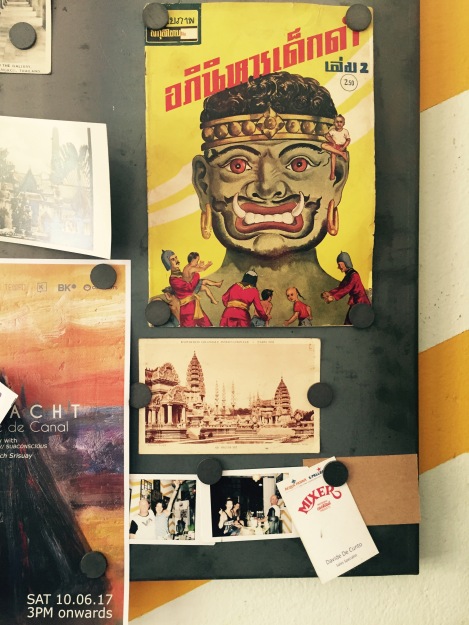
Comments : Leave a Comment »
Tags: bangkok, thai
Categories : Uncategorized
Sounds of a city
12 08 2017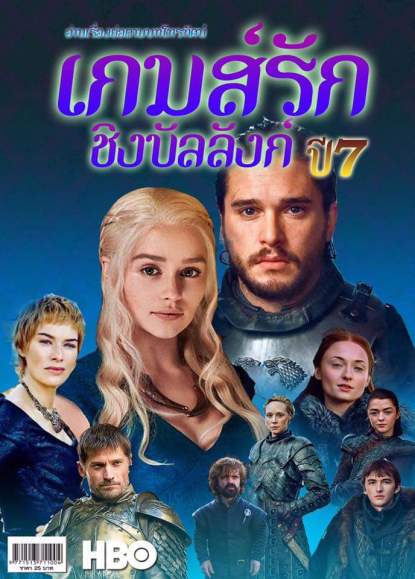
It impossible to separate a city from your subjective experience of it. Fifteen years ago on my first European tour I arrived in Barcelona depressed and as a result, I found the city cold and unwelcoming. I’ve never warmed to it since. So for me, Bangkok will always now be intertwined with “Despacito” (I was slow to catch on to that one), memories of Games of Thrones watched on computer screens on hotel beds, and the strange discovery of a youtube channel full of deep house remixes with Japanese animation montage video clips – the soundtrack to morning jogs and Nice Palace days.
Comments : Leave a Comment »
Tags: bangkok, cultural mix n match, japanese, personal
Categories : Uncategorized
New vs old
12 08 2017
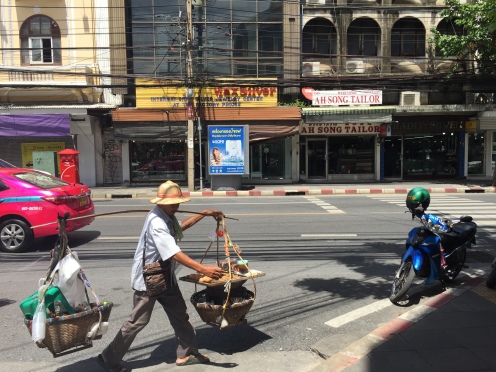
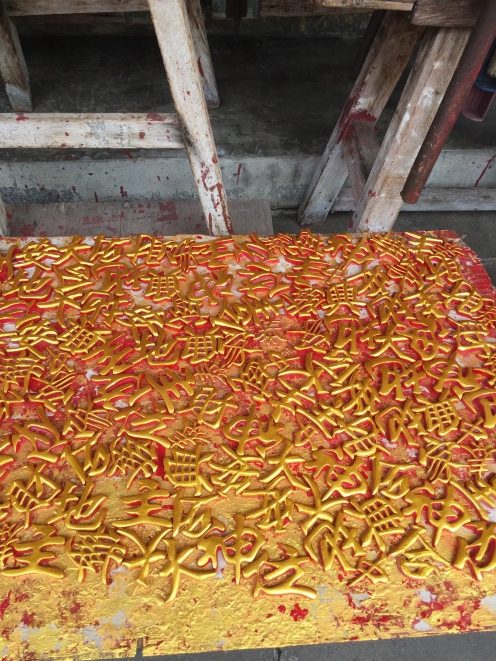
Comments : Leave a Comment »
Tags: bangkok, bangkok chinatown, images, streetscenes
Categories : Uncategorized
Chinatown
12 08 2017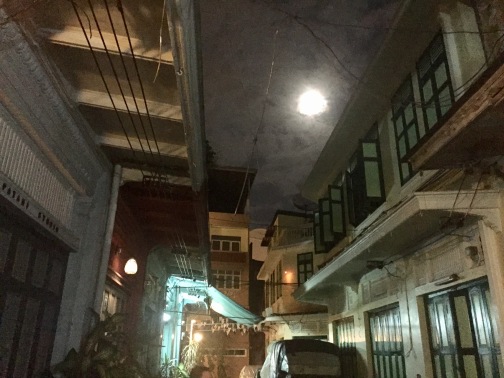
After a few weeks at the trusty Nice Palace, my boyfriend arrived in town and we decided to relocate to Chinatown for a different Bangkok flavor. We had chosen an airbnb above a tapas bar (!) in a hundred-year-old Chinese shophouse on Soi Nana, the newly hip and happening core of ‘cool’ Chinatown, where old buildings have been turned into cocktail bars ( Tep, Teens of Thailand) and art spaces (Cho Why) and a sprinkling of flat-white-serving Melbourne inspired cafes had opened. I was worried – was Chinatown about to be gentrified? Wasn’t “hipsterfication,” afterall, essentially homogenization? Didn’t all these “cool” cafes look pretty much…the same? Chinatown already character and soul. It didn’t need a new one.
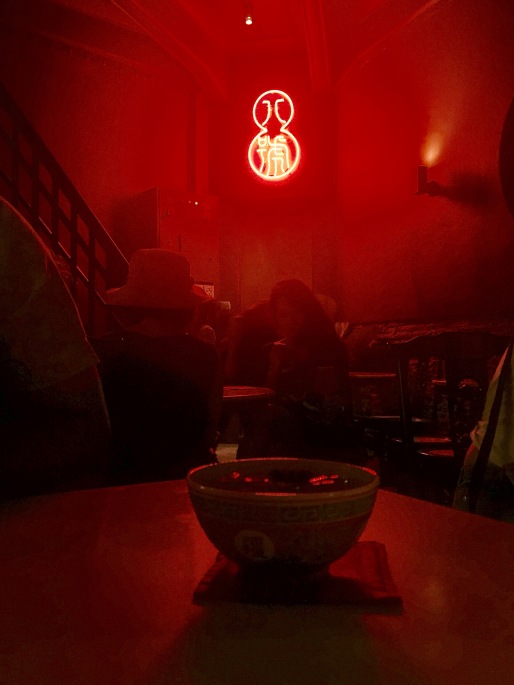
As it turns out though, my worries were premature. On long, loping nocturnal wanderings it quickly became clear that this cool and farang-friendly “new” Chinatown was confined to almost a single block, while the old untamed Chinatown stretched on for miles – miles of tangled alleyways and sleeping cats, chillis drying in the sun, motorbikes roaring through tiny lanes, dusty shops fragrant with herbs, Monkey King shrines, bubbling woks and vendors selling camphor wood and sea slugs, monkfruits, spices and herbs I couldn’t identify, with shoppers haggling in Teochew.
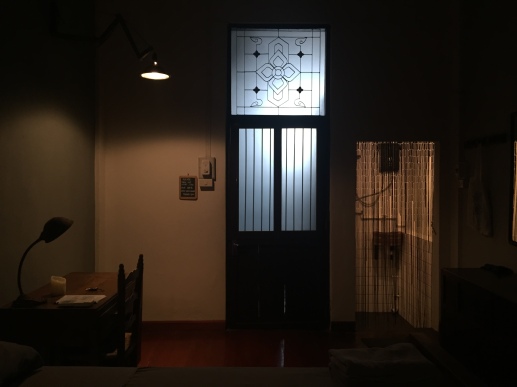

And street food. Visiting Chinatown with a Chinese person was a new experience: my boyfriend knew exactly what he wanted to eat. We had beef and duck noodles by day and at night, along a brightly lit Yaowarat thronged with festival-like crowds, grazed on chestnuts and pineapples, whole coconuts which has somehow had their husks removed to leave only a juicy white orb, and in the decayed foyer of a porno movie theatre, slurped on pigs tongue noodles.
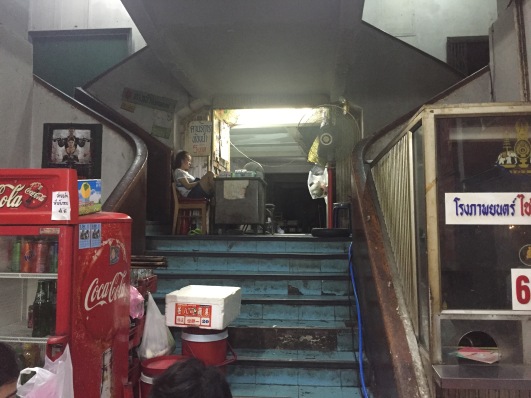

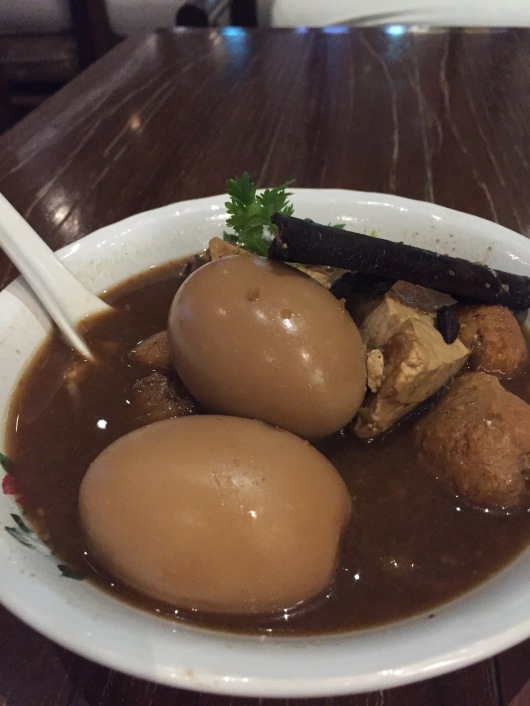
This was the Chinatown we had come for.
Comments : Leave a Comment »
Tags: bangkok, bangkok chinatown, cultural mix n match, neighourhoods, thai
Categories : Uncategorized
The skinniest building in Chinatown
12 08 2017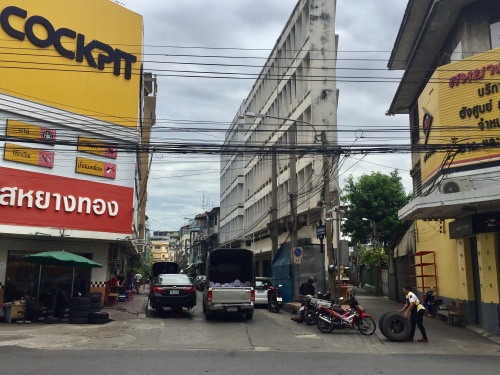
Comments : Leave a Comment »
Tags: architecture, bangkok, bangkok chinatown, design, strange places
Categories : Uncategorized
The prostitute’s temple
12 08 2017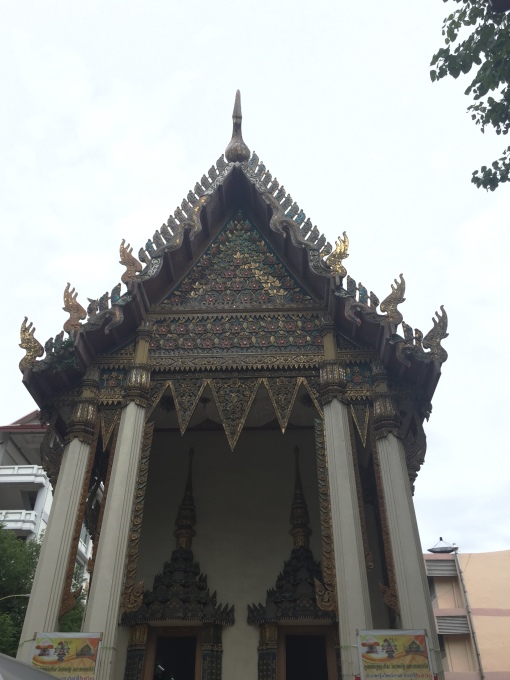
At the Empower Foundation sex work museum I had been intrigued to read about Wat Kanikaphon, literally “the temple built from the profits of the prostitute”.
It was constructed in the eighteenth century and paid for by notorious madam Grandmother Faeng, from the profits of her “green lantern house”. A bust of the unconventional Buddhist benefactor stands on the grounds.
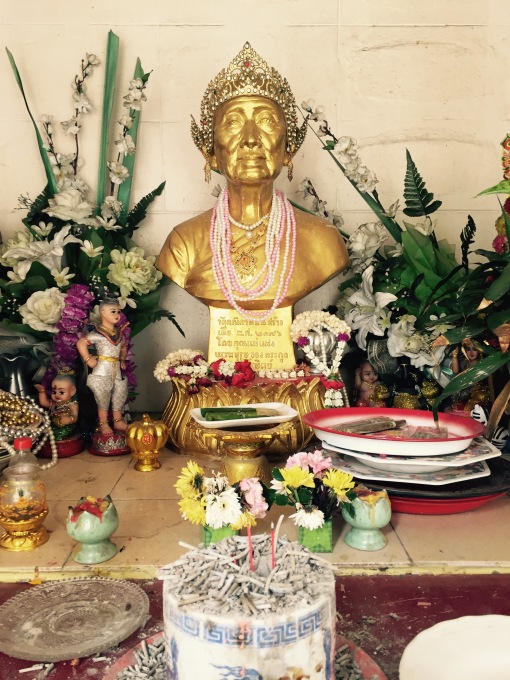
Today the temple stands in an interesting corner of Chinatown, directly facing a police station (and a Hindhu shrine to Ganesha) and next to the Poh Teck Tung Foundation and its “body snatcher temple”.
When I visited, it was busy with cross-dressing fortune tellers, stalls selling cardboard credit cards for the dead, emaciated temple dogs, orange robed monks and cars reversing in and out of the temple yard, now utilised as a seemingly profitable pay parking lot.
Comments : Leave a Comment »
Categories : Uncategorized
Street of a thousand stories
12 08 2017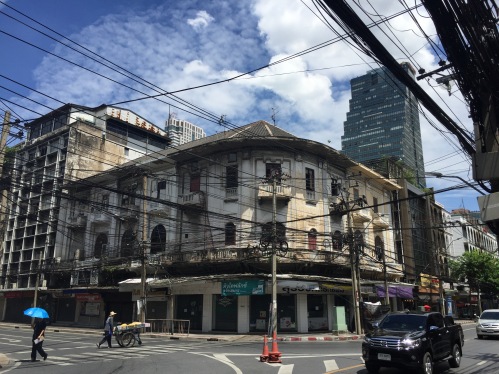
The street of Charoen Krung is a colourful Bangkok tale. The “new road” is, ironically, the city’s oldest, built at the behest of European merchants who had set up shop in vast mansions by the river in the eighteenth century, surviving today as the former French and current Portuguese embassies. The road begins in Chinatown, skirting the grimy tangle of the Talad Noi, an area of winding alleyways lined with workshops selling machinery, hooks and engines. From here it proceeds down – although often choked in traffic – past traditional Chinese shophouses and backstreet Indian and Muslim communities to Saphan Taksin, under the shadow of the doomed Sathorn Unique “ghost tower” (scroll down) and the boat shaped Wat Yannawa. Along the way it takes in the looming proto-fascist Central Post Office, tourist hordes disgorged from the riverside hotels, sometimes dubious tailor and gems stores, local street markets and quiet backstreets lined with wooden houses and hanging orchids.

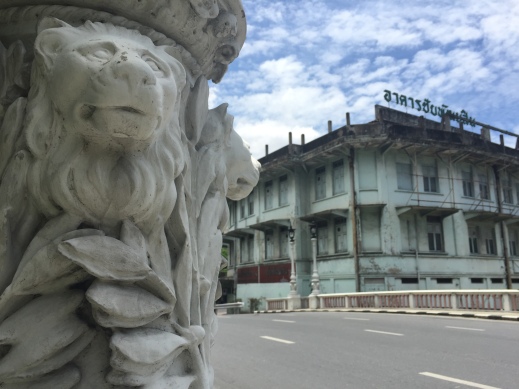
In the last few years, the area has become a locus for gentrification, adding another layer to its palimpset. There is incredible street art as a result of the Bukruk Street Art Festival and by the Warehouse30 development, galleries like Speedy Grandma and Soy Sauce Factory, and now bright hip little cafes like “Little Market” and (soon) flashy bar Tropical City.
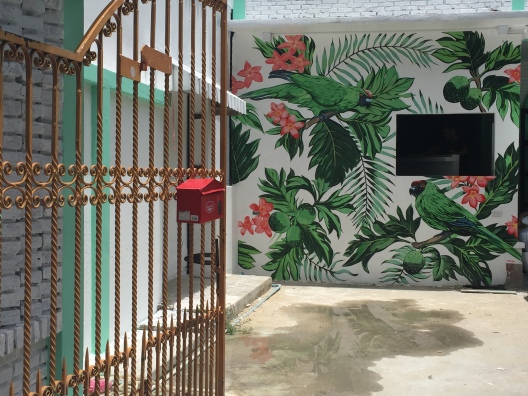
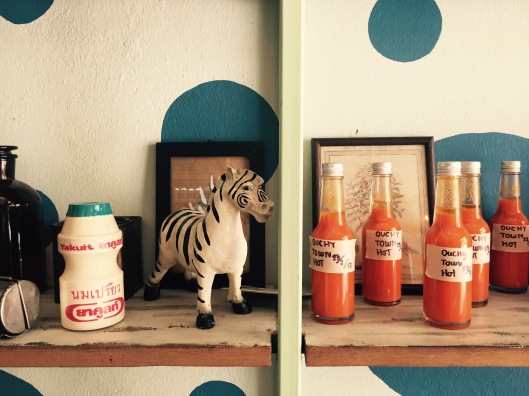
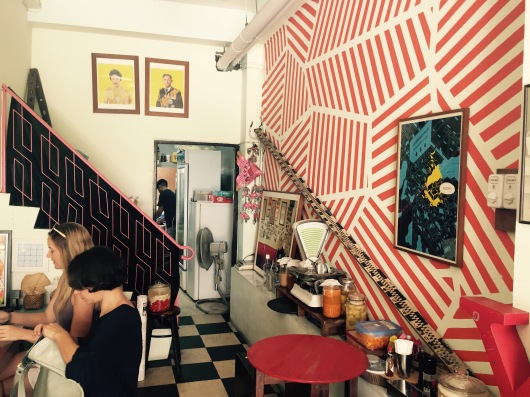
The apex of this new buzz is the refurbishment of the old General Post office as the Thailand Design and Culture Centre, an impressive complex of libraries, exhibition spaces and a rooftop terrace offering an awe-inspiring up-close view of the building facade’s gargantuan 1938 original Garuda statue, looking out over the skyline. It is truly iconic, a new view of Bangkok as a tropical Gotham. I was wowed.
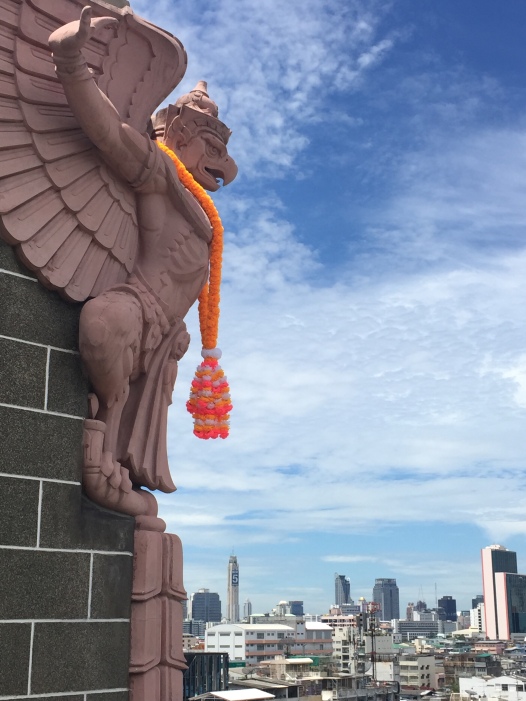
But the area is peppered with other, more low-key surprises – like this Vietnamese temple I never knew about, close to the Chinatown end, dating back to the nineteenth century and featuring a coop of sacred chickens under a bodi-sashed tree.
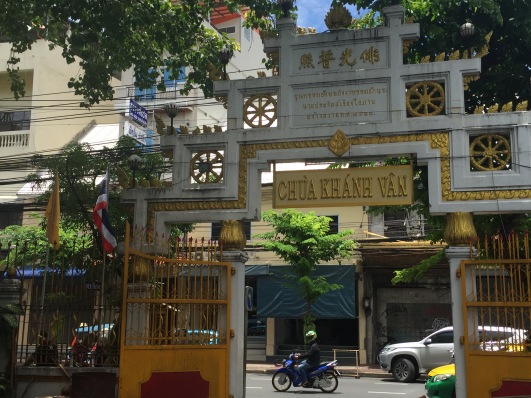
Or Harmonique, a restaurant in an old Chinese mansion entered through a gap in an ancient banyan tree.
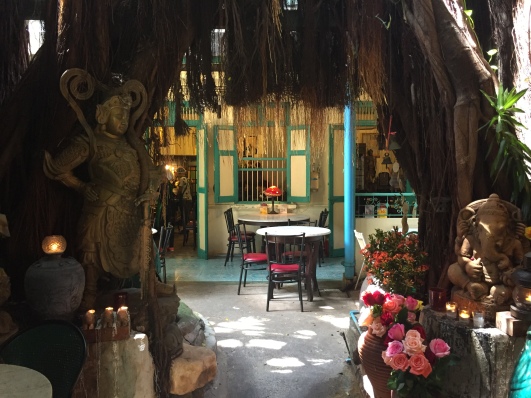
Comments : Leave a Comment »
Tags: bangkok, bangkok street art, charoen krung, thai, thai street art
Categories : Uncategorized
Street art of Warehouse 30
12 08 2017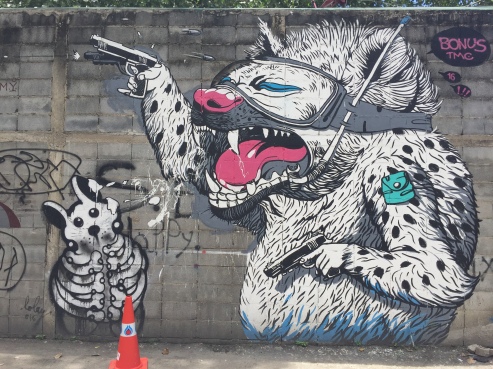
I was eager to see the Warehouse 30 development, another “hipster park”, this time in reclaimed 1940s warehouses (hence the name) on Charoen Krung Soi 30. Here, leading Thai architect Duangrit Bunnag (from the Bunnag clan, an originally Persian family powerful in the country for centuries) is spearheading a cluster of restaurants, cafes, a plant store, a performance space and a documentary movie theatre, similar to the ChangChui deveopment which had impressed me earlier, but with a much more central location. Changchui has been popular since opening a few months earlier, can Bunnag’s track record (he developed the Jam Factory on the other side of the river) and location put him out in front? Unfortunately though the complex wasn’t quite ready when I went to visit. It was actually about to be opened to the public the following (ie, this) week.
Still though, I was able to take a stroll (one thing I have learned is that no-one in Thailand tries to stop you from wandering through construction sites!) and into the adjacent small alley, which I discovered to be covered in great street art from many of the city’s “big names” (Lolay, Alexface etc). Here, hot and bothered tourists were being hustled into tuktuks, exposing me to a crisis of divided loyalties – should I say something? In the end though, the stupidity of the tourist’s overheard questions lead me to the conclusion that they deserved to be ripped off…
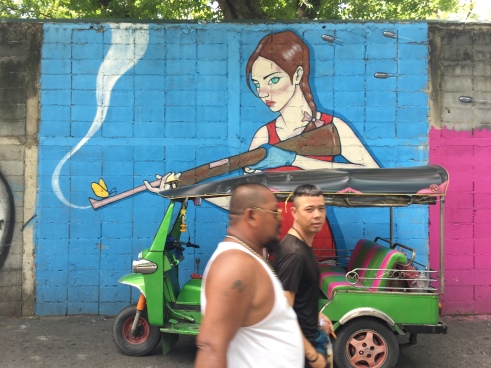
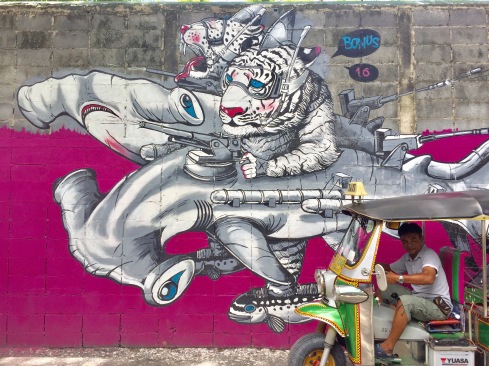
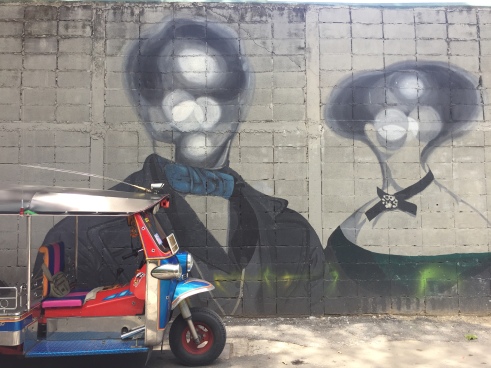


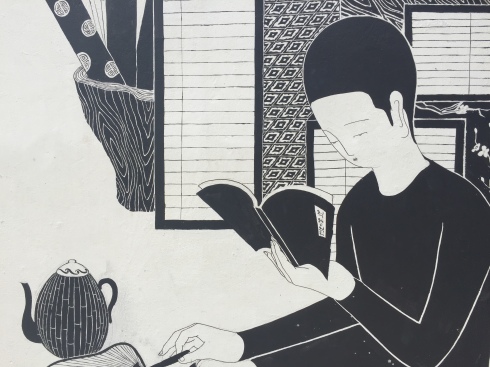
Comments : Leave a Comment »
Tags: bangkok, bangkok street art, thai, thai street art, warehouse 30 bangkok
Categories : Uncategorized
Garuda: The Lord of Charoen Krung
12 08 2017
Comments : Leave a Comment »
Tags: art, bangkok, charoen krung, design, occult, tcdc, thai
Categories : Uncategorized
Islamic Art of Thailand Foundation
12 08 2017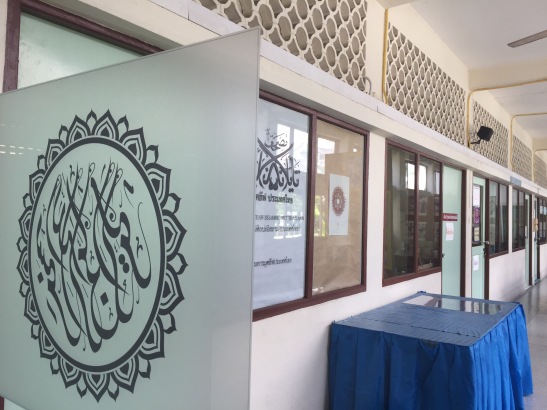
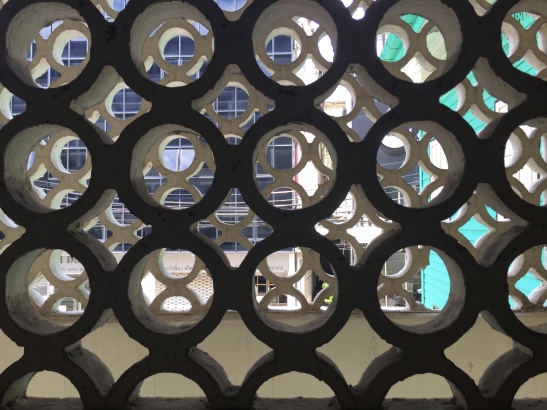
Comments : Leave a Comment »
Tags: architecture, bangkok, design, thai
Categories : Uncategorized
BKK street
12 08 2017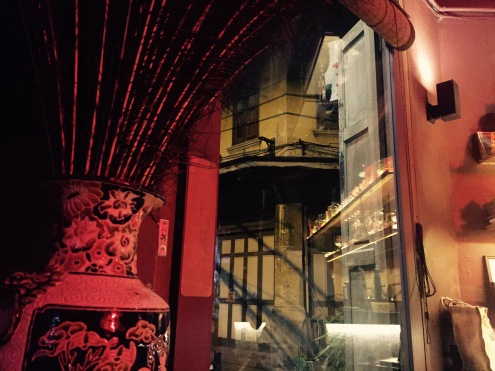
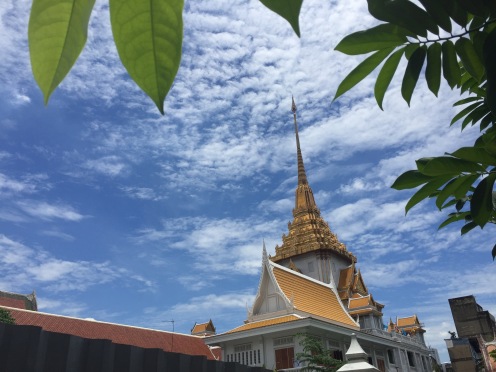
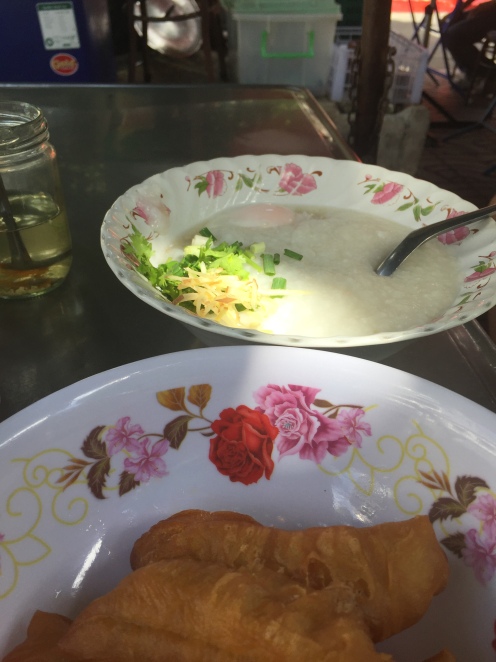
Comments : Leave a Comment »
Tags: bangkok, streetscapes, thai
Categories : Uncategorized
Dinner at Le Du
11 08 2017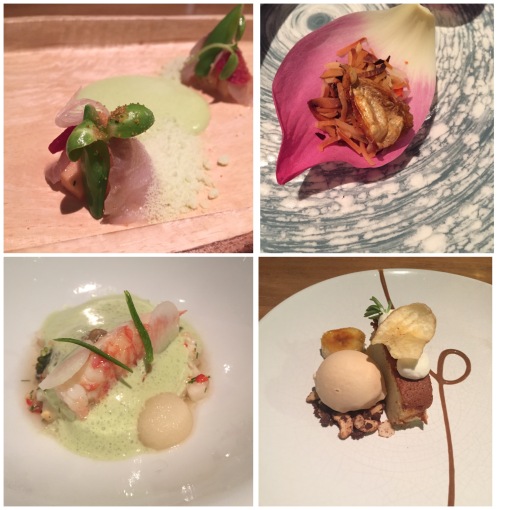
Comments : 6 Comments »
Tags: bangkok, le du bangkok, restaurants
Categories : Uncategorized
